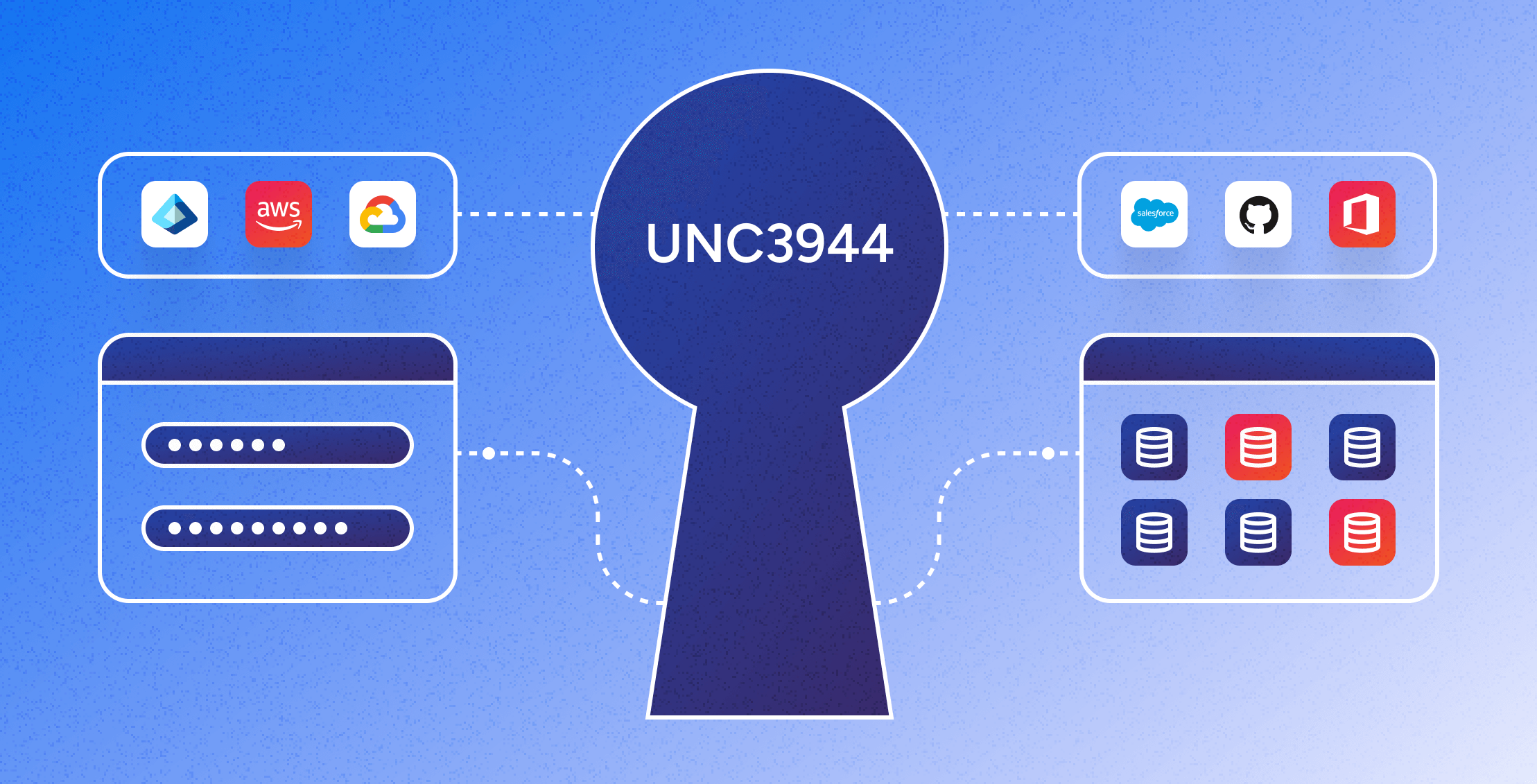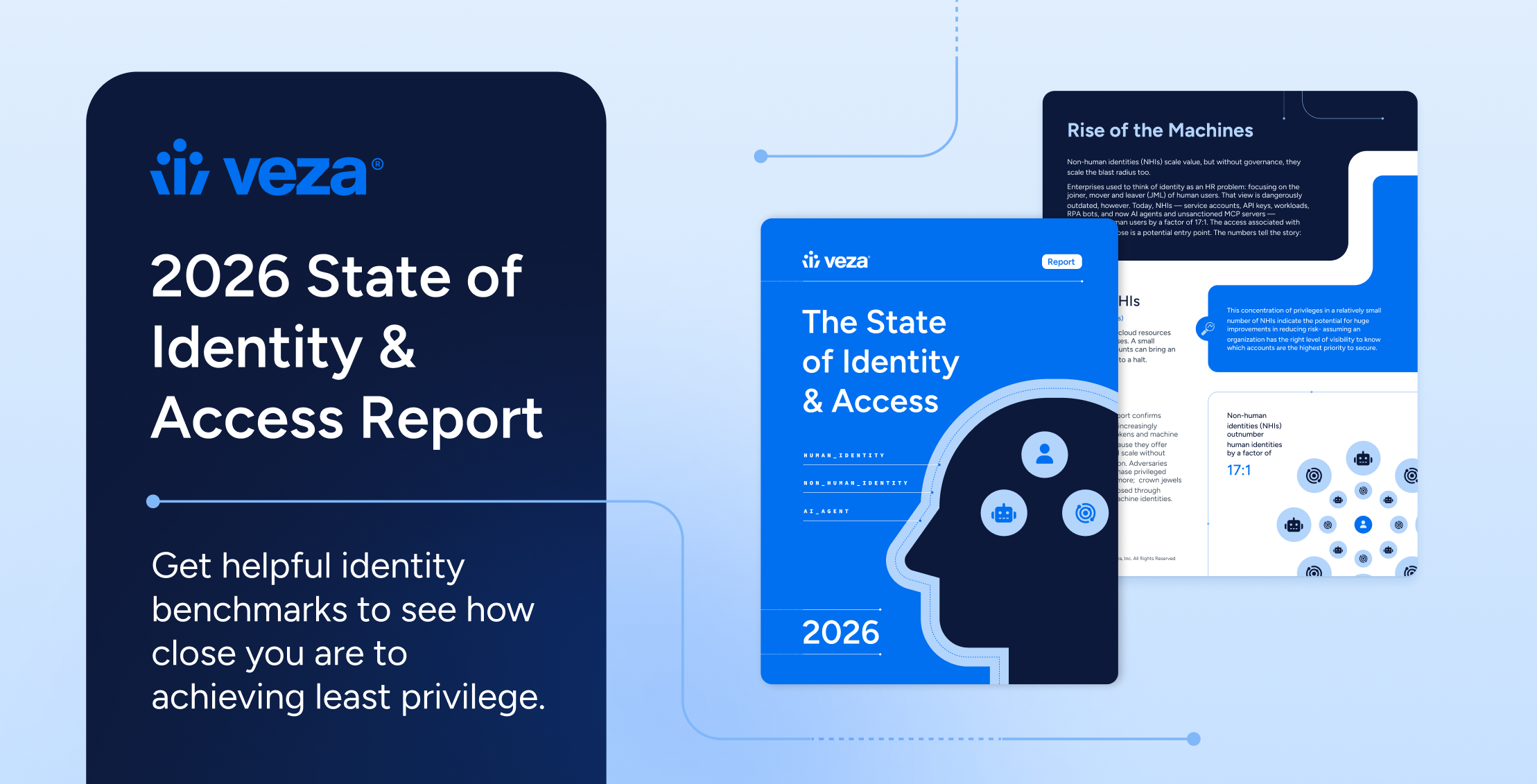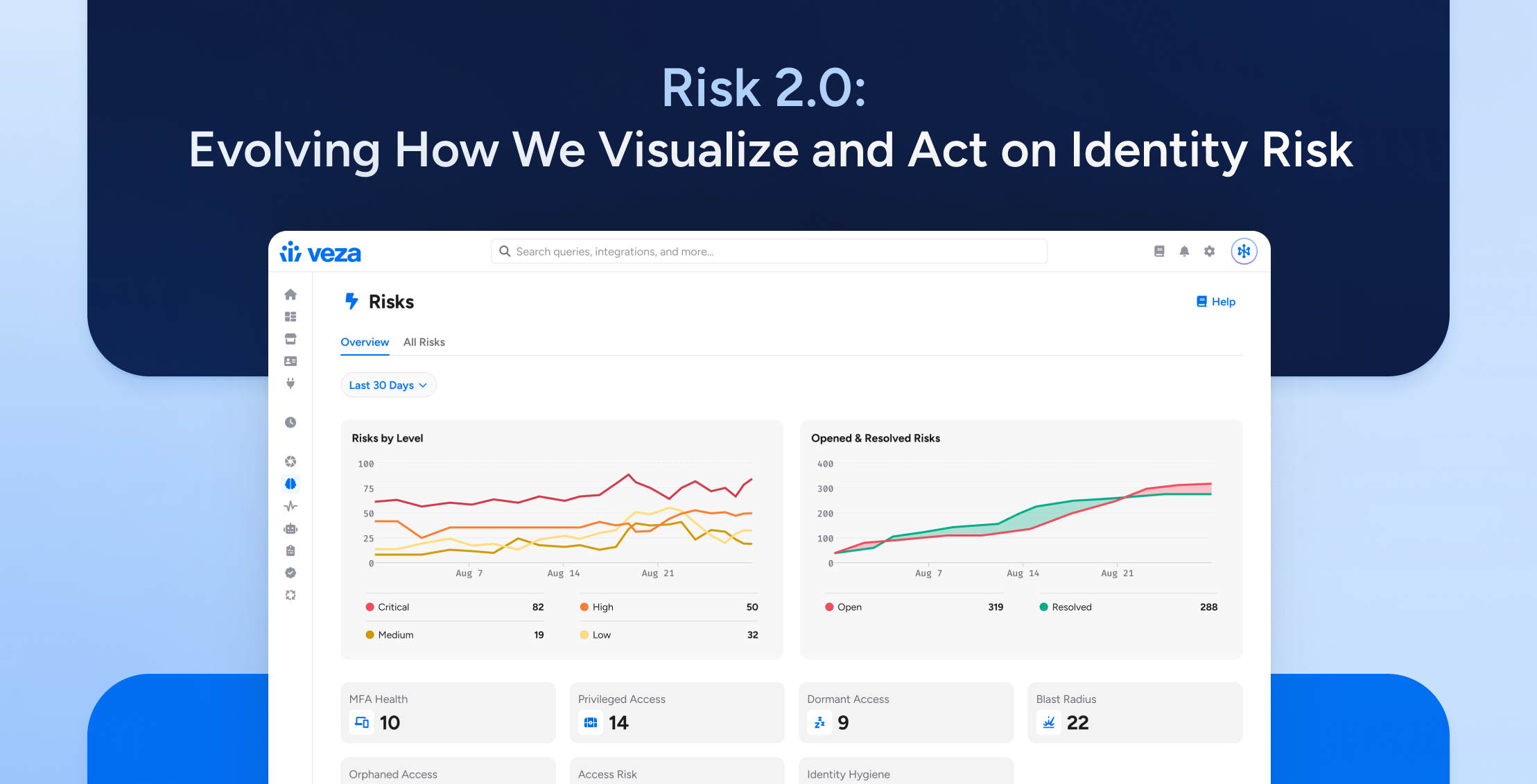
Introduction
A recent threat intelligence report from Mandiant underscores the growing risk posed by the UNC3944 threat group, which targets SaaS applications to steal sensitive data and extort organizations. As companies increasingly rely on a complex web of SaaS applications and cloud services, managing access sprawl and protecting against identity-related security incidents has become a top priority. Modern identity security platforms, with broad visibility, intelligence, and unified view of entitlements across platforms, are a powerful tool in mitigating these threats and safeguarding enterprises.
The UNC3944 Threat
UNC3944 employs sophisticated tactics to gain initial access to privileged accounts, often through social engineering attacks against corporate help desks. Once inside, they conduct extensive reconnaissance, abuse SSO permissions, and create persistence mechanisms like new virtual machines. Notably, UNC3944 pivots to SaaS applications like Salesforce, O365, and even cloud infrastructure platforms such as AWS and Azure, exfiltrating data to attacker-owned cloud storage using cloud synchronization tools. Traditional security controls struggle to detect this activity due to the abstracted nature of SaaS networking.
The Power of Modern Identity Security Platforms
Modern identity security platforms address the core challenges that enable threats like UNC3944 to succeed. By providing comprehensive visibility and control over identities and permissions across an enterprise’s entire multi-cloud ecosystem, these platforms empower security teams to:
- Discover and map all human and service identities, their effective permissions, and the data they can access across all SaaS apps and cloud services. This eliminates dangerous blind spots.
- Identify and remediate excessive, unused, and high-risk permissions that attackers often exploit to move laterally and access sensitive data. Advanced platforms offer ML-powered recommendations to streamline least privilege enforcement.
- Continuously monitor for suspicious access activity and permission changes in real-time, enabling rapid detection and response to threats like UNC3944’s SaaS-focused attacks.
- Bridge the gap between decentralized, line-of-business-owned SaaS platforms and central security governance. A unified view of identities and permissions allows for effective management while enabling domain experts to manage their apps.
- Augment and integrate with existing identity and access management tools, providing the missing SaaS-to-data context they lack.
By addressing identity and access sprawl at its core, modern identity security platforms harden enterprises against the exact vectors that groups like UNC3944 seek to exploit. When planning and implementing these platforms, security teams must ensure they can confidently answer the critical question “who can take what action on what data,” across even the most complex multi-cloud environments.
Conclusion
As the UNC3944 threat demonstrates, attackers are increasingly targeting SaaS applications and cloud platforms as a means to steal sensitive data and extort organizations. In the face of decentralized IT ownership and the erosion of central security controls, enterprises must adopt solutions that provide comprehensive visibility and control over identities and access in their multi-cloud ecosystems. Modern identity security platforms will be a great asset to help companies defend against these evolving threats, empowering them to secure their most critical assets in the era of identity-first security.





